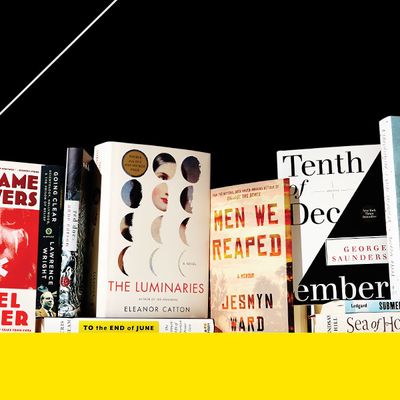
1. The Flamethrowers, by Rachel Kushner
ÔÇ£I walked out of the sun, unfastening my chin strap. Sweat was pooling along my collarbone, trickling down my back and into my nylon underwear, running down my legs under the leather racing suit. I took off my helmet and the heavy leather jacket, set them on the ground, and unzipped the vents in my riding pants.ÔÇØ These are not the opening lines of Rachel KushnerÔÇÖs The Flamethrowers┬áÔÇö those belong to a member of an Italian cycle battalion in World War I who is about to use a headlamp to kill a man ÔÇö but they are the first ones we hear from Reno, a motorcycle racer and aspiring artist. With the sweat and leather and underwear and unzipping, there is so much sex with us right away, and so much else, too: hints of the Western, with that solo figure riding hard into town; and of the fantasized sex goddess a male cartoonist might doodle in his notebook (for Reno is a woman, just 22 years old); and, for that matter, of the different fantasies of lesbian pulp fiction. And then there is Kushner blowing right through all of them, to write the best, most brazen, most interesting book of the year.
The Flamethrowers is about art, authenticity, political radicalism, speed, desire, duplicity, male egos, female swagger and its constraints. More specifically, it is about the ill-fated relationship between Reno and her older lover, Sandro Valera, a successful artist and the estranged second son of T.ÔÇëP. ValeraÔÇörubber magnate, onetime Fascist, millionaire manufacturer of high-end Italian motorcycles. The book opens with Reno on her ÔÇÖ77 Moto Valera attempting to set the land-speed record on the Bonneville Salt Flats, and ends with her alone in the French Alps, trying to decide how long to wait for a man to keep his appointment with her: speed against stasis, autonomy against companionship, trust against betrayal. The Flamethrowers has all the momentum of Reno on her motorcycle, but nothing here passes in a blur. On the contrary, much of what makes this book so magnificent is KushnerÔÇÖs astonishing observational powers; she seems to work with a muse and a nail gun, so surprisingly yet forcefully do her sentences pin reality to the page. I was pinned there, too.
2. Submergence, by J.ÔÇëM. Ledgard
On the surface, itÔÇÖs a love story between a scientist searching for marine life and a British spy kidnapped by Al Qaeda in Somalia. But, as the title suggests, surfaces are not the point in Submergence, a gorgeous, disquieting story about the depth, pressure, and isolation of being human.
3. The Luminaries, by Eleanor Catton
New Zealand, January 14, 1866. A gold miner vanishes. A prostitute overdoses on laudanum. A hermit expires in his cabin. ThatÔÇÖs the setup for The Luminaries, a very clever, absurdly fun novel that reads like a cross between a locked-room mystery, a spaghetti Western, a game of Sudoku, and Edwin Drood.
4. Red Doc>, by Anne Carson
How to summarize this sequel to Autobiography of Red? ÔÇ£Accompanied by musk┬¡ oxen and ice bats, a war hero and a red monster, onetime lovers, navigate the complexities of modern life, including the loss of a parent and PTSDÔÇØ? Red Doc> is that strange, and that familiar; it stayed with meÔÇöand undid meÔÇömore than any other book I read this year.
5. A Constellation of Vital Phenomena, by Anthony Marra
In MarraÔÇÖs remarkable debut novel, three people forge a temporary family while searching, or grieving, for their actual relatives during the second Chechen war. Disturbing and profoundly sad, this Constellation nonetheless made me think of AudenÔÇÖs constellation ÔÇö those ÔÇ£ironic points of light,ÔÇØ lit by the ethical, that stave off total darkness.
6. Sea of Hooks, by Lindsay Hill
A coming-of-age story, Sea of Hooks has a lot of the content hallmarks of modern fiction: fragile mother, alcoholic father, dyslexia, sexual abuse, suicide. But it is formally unusual ÔÇö written without chapter breaks, in separate, titled paragraphs ÔÇö and wholly its own story: a patient, astute, linguistically gorgeous account of how a self gets constructed.
7. Men We Reaped, by Jesmyn Ward
Between 2000 and 2004, Ward lost five men in her life, including her younger brother. This frank, unconventional, intelligently structured memoir, set largely in small-town Mississippi, attempts to answer a difficult question: How are those five deaths connected to the larger tragedy facing African-American men?
8. Tenth of December, by George Saunders
The very funny, very dark Saunders once again blends banality and surrealism to skew, skewer, and illuminate American life. Unlike many geniuses of the surreal, though, Saunders is also attuned to interiority; his characters think in a peculiarly modern argot that is instantly familiar, alternatively irritating and winsome, and one of the great pleasures of this book.
9. To the End of June: The Intimate Life of American Foster Care, by Cris Beam
In 2011, there were 400,000 kids in the U.S. foster-care system; Beam tells the story of that system, those kids, and the adults who try to raise them. The only problem with her book ÔÇö as with Katherine BooÔÇÖs Behind the Beautiful Forevers┬áÔÇö is persuading people to read it: Indian slums, foster care; ugh, do I have to? Nope. But itÔÇÖs terrific.
10. Going Clear: Scientology, Hollywood, and the Prison of Belief, by Lawrence Wright
WrightÔÇÖs history of Scientology wins the award for the book that made me exclaim aloud most often this year. However weird you might think L. Ron HubbardÔÇÖs organization is, Wright is here to tell you that itÔÇÖs weirder; seldom has nonfiction made me think so often of horror, sci-fi, and dystopian literature.
This article originally appeared in the December 16, 2013 issue of New York Magazine.

